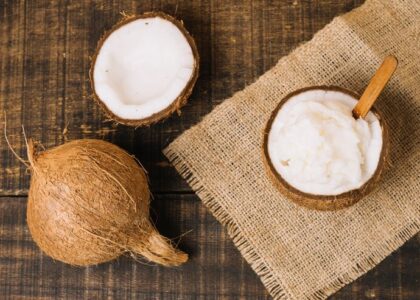The Plantable Packaging Industry is expected to grow significantly over the next decade, with projections showing it will be valued at US$ 120.0 Million in 2023 and rising to US$ 340.0 Million by 2033, with a significant compound annual growth rate (CAGR) of 11.0%.
Investment in the plantable packaging industry can provide significant opportunities for growth and sustainability. The ability to customize and innovate in plantable packaging makes it an intriguing route for growth and development in the packaging sector.
One of the most significant advantages of plantable packaging is its eco-friendliness. Plantable packaging, created from natural and biodegradable materials, is an excellent choice for environmentally conscious consumers who are looking for eco-friendly solutions.
Request for a Sample of this Research Report: https://www.futuremarketinsights.com/reports/sample/rep-gb-17193
Governments around the world are also putting measures in place to decrease plastic waste and encourage sustainable packaging. This allows plantable packaging producers to capitalize on the growing demand for sustainable alternatives.
Plantable packaging also provides a unique value proposition to clients because it not only functions as a packaging material but also doubles as a way to produce plants. This unique technique can help businesses stand out in a congested market and attract customers who want something different.
However, there are a few factors that stakeholders should be aware of before entering the market. The Plantable Packaging Industry size remains modest in comparison to other packaging materials, which may limit the potential for high returns on investment in the short term.
Drivers:
- Sustainability and Eco-friendliness: Plantable packaging is environmentally friendly, made from biodegradable materials and embedded with seeds. It aligns with the increasing global focus on sustainable and eco-friendly packaging solutions.
- Reduced Plastic Usage: The plantable packaging reduces the need for traditional plastic packaging, making it an appealing alternative as governments and consumers seek to reduce plastic waste.
- Consumer Awareness: Growing environmental consciousness among consumers has led to increased demand for sustainable and eco-friendly products, including plantable packaging.
- Regulatory Support: Many governments are promoting sustainable packaging practices through regulations and incentives, driving companies to adopt plantable packaging solutions.
- Marketing Appeal: Plantable packaging can serve as a marketing tool, as it provides an interactive and unique experience for consumers who can plant the packaging to grow plants or herbs, fostering brand loyalty.
Restraints:
- Cost: The production of plantable packaging can be more expensive than conventional packaging materials. Manufacturers need to overcome cost challenges to make it more competitive.
- Limited Durability: Plantable packaging, being biodegradable, may not offer the same level of durability and protection as certain synthetic materials, which can limit its use in specific applications.
- Seed Viability: The viability of seeds embedded in plantable packaging over time can be a concern. Ensuring that seeds remain viable until planting is a technical challenge.
- Complex Manufacturing: Manufacturing plantable packaging materials can be more complex and require specialized equipment, increasing production costs.
- Limited Awareness and Adoption: Despite increasing interest, plantable packaging is still relatively unknown to some consumers and businesses. Greater awareness and education are required to drive widespread adoption.
- Product Shelf Life: The shelf life of products in plantable packaging may be shorter than those in traditional packaging, limiting its use for long-shelf-life products.
Purchase this report to Uncover Segment-specific Information, Identify Key Trends, Drivers, and Challenges: https://www.futuremarketinsights.com/checkout/17193
Regional Insights
North America has a significant market share of 26.3% and is home to the Sustainable Packaging Coalition (SPC), which provides companies with tools and resources to implement sustainable packaging solutions like plantable packaging. Major retailers like Walmart and Target are also exploring eco-friendly packaging alternatives.
Europe captured a strong market share of 32.0% in the plantable packaging industry in 2022. The EU Circular Economy Action Plan and legislation in various European countries limit plastic waste and promote sustainable packaging options. Some European companies specialize in plantable packaging solutions, like GreenBottle in the UK.
India is showing promising growth in the Plantable Packaging Industry with a projected growth trajectory of 7.9%. The government’s Green Good Deeds campaign and initiatives by businesses like Sow and Grow in Mumbai are encouraging the use of eco-friendly packaging materials like plantable packaging.
Competitive Landscape:
The market is fragmented, with several big companies as well as some global and regional small-and-medium-sized firms operating globally. Many businesses compete based on the quality of their products and the production technology they use. Major firms are engaging in mergers and acquisitions, infrastructure development, expanding manufacturing facilities, investing in R&D facilities, and looking for possibilities to integrate vertically across the value chain.
- Amcor will produce an eco-friendly chocolate pack in South America in 2021. The recyclable plastic packaging for powdered chocolate was created and manufactured by the firm. The package cut its carbon footprint by 53% compared to the prior packaging.
- Amcor created a groundbreaking packaging solution for healthcare packaging in April 2021. The latest addition to the recyclable healthcare packaging product portfolio is the new AmSky blister system.
Key Players:
Amcor Limited, 3M Company, Bemis Company, Inc., Chevron Phillips Chemical Company LLC, and Honeywell International Inc.
Key Segments Covered:
By Material:
- Cardboard
- Bioplastic
- Mushroom
- Agave
By Packaging Formats:
- Bags & Pouches
- Trays
- Boxes & Cartons
- Wraps & Sheets
- Others
By End-User:
- Food and Beverages
- Pharmaceutical
- Personal Care and Cosmetics
- Others
By Region:
- North America
- Latin America
- Western Europe
- Eastern Europe
- Asia Pacific Excluding Japan (APEJ)
- Japan
- Middle East & Africa (MEA)
For any Queries Linked with the Report, Ask an Analyst: https://www.futuremarketinsights.com/ask-the-analyst/rep-gb-17193
About Future Market Insights (FMI)
Future Market Insights, Inc. (ESOMAR certified, recipient of the Stevie Award, and a member of the Greater New York Chamber of Commerce) offers profound insights into the driving factors that are boosting demand in the market. FMI stands as the leading global provider of market intelligence, advisory services, consulting, and events for the Packaging, Food and Beverage, Consumer, Technology, Healthcare, Industrial, and Chemicals markets. With a vast team of over 5000 analysts worldwide, FMI provides global, regional, and local expertise on diverse domains and industry trends across more than 110 countries.
Contact Us:
Future Market Insights Inc.
Christiana Corporate, 200 Continental Drive,
Suite 401, Newark, Delaware – 19713, USA
T: +1-845-579-5705
For Sales Enquiries: sales@futuremarketinsights.com
Website: https://www.futuremarketinsights.com
LinkedIn| Twitter| Blogs | YouTube




